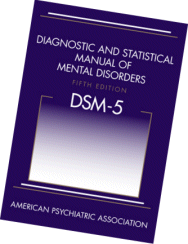 Demonstrating that the folks who are revising the Diagnostic and Statistical Manual of Mental Disorders (DSM-5) are listening to the scientific data, they have nixed two new proposed diagnoses — anxiety-depressive syndrome and attenuated psychosis syndrome. The changes were announced this week at the annual meeting of the American Psychiatric Association, the organization largely responsible for updating the reference manual used by health and mental health professionals to make diagnoses.
Demonstrating that the folks who are revising the Diagnostic and Statistical Manual of Mental Disorders (DSM-5) are listening to the scientific data, they have nixed two new proposed diagnoses — anxiety-depressive syndrome and attenuated psychosis syndrome. The changes were announced this week at the annual meeting of the American Psychiatric Association, the organization largely responsible for updating the reference manual used by health and mental health professionals to make diagnoses.
The critics were worried that these new diagnoses would label millions of Americans with a mental disorder — and offering them subsequent treatment — that today wouldn’t qualify for such diagnosis or treatment.
For instance, while anxiety mixed with depression is actually quite commonly seen in the wild of clinical practices, there is no specific diagnosis for this mixed mood state. The DSM-5 sought to correct this problem — that clinicians are treating millions for a problem the DSM says doesn’t technically exist. But critics worried the new criteria were too lax and might result in over-diagnosis.
The same was true for attenuated psychosis syndrome. The proposed diagnosis was an effort to get children and young adults into treatment sooner for experiencing weird thoughts or hallucinations. But people worried that it would lead to unnecessary treatment of kids for a potentially temporary problem.